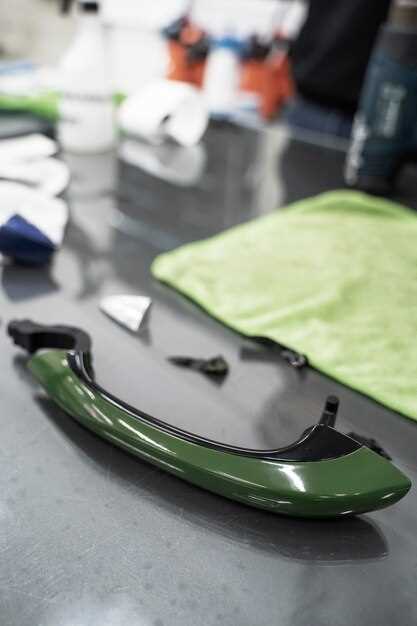
In the world of motorsports, the quest for enhanced performance is never-ending. One of the most effective strategies for achieving this goal is the selection of lightweight materials. Reducing the overall weight of a vehicle can lead to significant improvements in acceleration, braking, and handling. The optimal balance between weight and strength is crucial, as it can profoundly influence the outcome on the track.
Lightweight materials such as carbon fiber, aluminum alloys, and advanced composites have revolutionized racing designs. These materials not only contribute to a decrease in weight but also maintain or even enhance structural integrity. The application of such materials allows for greater design flexibility, enabling engineers to innovate while adhering to stringent safety regulations.
Moreover, the choice of lightweight materials extends beyond mere weight reduction; it impacts the overall performance dynamics of the racing vehicle. Improved power-to-weight ratios, enhanced fuel efficiency, and superior handling characteristics can all be attributed to the strategic integration of these materials. Consequently, teams that prioritize lightweight solutions often find themselves at a competitive advantage in high-stakes racing environments.
Evaluating Material Options: Carbon Fiber vs Aluminum

When it comes to racing performance, the choice of materials significantly impacts vehicle weight, strength, and aerodynamics. Two of the most popular lightweight materials in racing are carbon fiber and aluminum. Each material has its unique properties that influence performance, cost, and application suitability.
Carbon Fiber
Carbon fiber is renowned for its exceptional strength-to-weight ratio and stiffness. It is a preferred material in high-end racing applications due to several attributes:
- Lightweight: Carbon fiber is significantly lighter than aluminum, allowing for reduced overall vehicle weight.
- High Strength: It offers superior tensile strength, which enhances the structural integrity of components.
- Stiffness: High rigidity contributes to better handling characteristics and performance during high-speed maneuvers.
- Customizability: Carbon fiber can be molded into complex shapes, allowing for aerodynamic optimization.
However, there are downsides:
- Cost: Carbon fiber is considerably more expensive to produce and repair.
- Fragility: It can be more susceptible to impact damage compared to aluminum.
Aluminum

Aluminum is a versatile and cost-effective material that has been utilized in racing for decades. Its advantages include:
- Affordability: Generally more economical than carbon fiber, making it accessible for a wider range of applications.
- Ductility: Aluminum is less brittle and can absorb impacts better, leading to improved durability.
- Ease of Fabrication: It is straightforward to work with, allowing for easier manufacturing processes.
Nevertheless, aluminum also has some limitations:
- Weight: It is heavier than carbon fiber, which can negatively affect speed and fuel efficiency.
- Lower Stiffness: While still strong, it does not match the rigidity of carbon fiber, potentially affecting handling performance.
Conclusion
Choosing between carbon fiber and aluminum for racing performance largely depends on the specific needs of the project. For high-performance racing where weight savings and stiffness are critical, carbon fiber is often the preferred choice. However, for applications where cost and durability are paramount, aluminum may be the better option. Ultimately, understanding the properties, advantages, and disadvantages of each material will help in making an informed decision that enhances overall racing performance.
Optimizing Weight Distribution for Enhanced Acceleration
In racing, the optimization of weight distribution is crucial for enhancing acceleration and overall performance. By carefully adjusting the placement of lightweight materials, teams can significantly improve a vehicle’s balance and responsiveness. The key is to achieve an ideal center of gravity that allows for better traction and quicker acceleration.
When utilizing lightweight components, such as carbon fiber or aluminum alloys, teams should focus on distributing weight across the chassis in a manner that enhances dynamic stability. For instance, placing more weight over the driven wheels can lead to increased grip, which is essential for rapid acceleration out of corners.
The front-to-rear weight ratio plays a significant role in performance. A well-balanced vehicle with a slight rear bias often yields the best results in terms of acceleration. This approach minimizes wheel spin and maximizes the force applied to the ground. Additionally, distributing weight lower in the chassis can further improve handling by reducing the vehicle’s center of gravity.
Furthermore, advanced simulation tools and data analysis can assist engineers in fine-tuning weight distribution during the design phase. By simulating different scenarios with varying placements of lightweight materials, teams can predict performance outcomes and make informed decisions that align with their racing strategy.
Ultimately, a thorough understanding of how weight distribution affects acceleration is vital. By combining lightweight materials with strategic planning, racing teams can achieve significant improvements in performance, leading to competitive advantages on the track.
Assessing Durability of Lightweight Materials in High-Stress Conditions
In the realm of racing performance, the selection of lightweight materials is crucial for enhancing speed and maneuverability. However, these materials must also undergo rigorous testing to ensure their durability under high-stress conditions typically encountered during intense races.
The primary concern when utilizing lightweight materials is to evaluate their mechanical properties, such as tensile strength, fatigue resistance, and impact tolerance. These factors significantly influence the performance and safety of racing vehicles. Advanced composites, such as carbon fiber reinforced polymers, exhibit exceptional strength-to-weight ratios, making them ideal candidates. However, it is essential to conduct comprehensive tests to understand how these materials behave under extreme loads and temperature fluctuations commonly experienced on the racetrack.
Environmental factors also play a significant role in the durability of lightweight materials. Exposure to UV radiation, moisture, and varying temperatures can lead to degradation over time. Thus, ensuring that materials are treated or coated to withstand these conditions is vital. Laboratory simulations that mimic race conditions can help manufacturers assess how different lightweight materials hold up, allowing for the identification of potential weaknesses.
Furthermore, real-world testing is indispensable. Data collected from live racing events can provide insights into how lightweight components perform under actual high-stress scenarios. This practical approach reveals hidden flaws and areas for improvement that might not surface during theoretical assessments.
Ultimately, choosing the right lightweight materials involves a delicate balance between reducing weight and maintaining strong durability. The continuous advancement in material science must be accompanied by rigorous testing protocols to ensure that the integration of lightweight materials results in enhanced performance without compromising safety and reliability in high-stress racing conditions.



